STUART LEE
OLD WINE
IN A NEW
BOTTLE
CLASSIC CARD TRICKS
SPECTACULARLY RE-WORKED
ALL YOU NEED
TO KNOW
Order this book online at www.trafford.com
or email
Most Trafford titles are also available at major online book retailers.
Copyright 2010 Stuart Lee. (Revised Edition 2012)
All rights reserved. No part of this publication may be reproduced, stored in a retrieval system, or transmitted, in any form or by any means, electronic, mechanical, photocopying, recording, or otherwise, without the written prior permission of the author.
ISBN: 978-1-4669-4586-9 (sc)
ISBN: 978-1-4669-4587-6 (e)
Library of Congress Control Number: 2012911740
Trafford rev. 07/27/2012
 www.trafford.com
www.trafford.com
North America & international
toll-free: 1 888 232 4444 (USA & Canada)
phone: 250 383 6864 fax: 812 355 4082
CONTENTS
THERE ARE SOME CARD TRICKS that can be described as classic either because the outcome of the trick is well-known to the audience (for example, where a spectator thinks of a card and the performer then produces or names the thought-of card) or because the trick is of a particular genre (for example, where the location of a card in the pack or deck is discovered by spelling out the name of the card). What this book does is to take a number of these classic tricks and, by adapting them, produce a much heightened effect in each case.
The book sets out the complete instructions for the performance of a routine using these tricks. Only a minimum of skill in card manipulation is required to perform the routine and such manipulations as are required are fully explained and described. In addition, complete instructions for the performance of any sleights-of-hand referred to in the text are given although the routine can be performed without the use of any as the tricks are self-working, the sleights-of-hand being used only to heighten the appearance of the cards being indiscriminately mixed. The basic routine, which can be readily adapted to suit any circumstances, lasts for approximately
25 minutes.
The rest of this introduction is intended for the reader with little or no experience in performing card magic. The more experienced reader may wish merely to cast an eye over it to confirm that there is nothing new to him or her in it. The beginner, however, should not see it as a section that can be skipped over to get to the meat of the book. For him or her it contains information that is essential to a full understanding of later material.
First of all, some definitions:
All 52 cards together are the pack or the deck
Any part of the pack is a packet
A hand (of cards) is a packet that has been dealt to or given to a spectator
To deal consecutively is to deliver to each hand in turn one card until the deal is completed. To deal the hands individually is to deliver all the cards required to one hand before proceeding to deal the next hand.
To count cards reversing their order is to place each card as it is counted on top of the previous card. To count cards without reversing their order is to place each card as it is counted beneath the previous card.
Face-down and face-up cards are self-evident terms, the face of a card being its value and suit.
The long edge of a card, packet, or pack is the side .
The short edge of a card, packet, or pack is the end .
Front and forward and outward are away from you, and rear and backward and inward are towards you.
Left and right are from your viewpoint.
With the end of the cards or pack pointing towards the spectators, the outer end is the end pointing towards the spectators, and the inner end is the end pointing towards you.
With the cards or pack held in the right hand and with the outer end pointing towards the spectators, the outer side is to the right and the inner side is towards the left. Similarly, if the outer side is pointing towards the spectators the outer end is to the right and the inner end is to the left.
With the cards or pack held in the left hand and the outer end pointing towards the spectators the outer side is to the left and the inner side is to the right. Similarly, if the outer side is pointing towards the spectators the outer end is to the left and the inner end is to the right.
The fingers are: first (or index ), second , third (or ring ), and fourth (or little , sometimes referred to as the pinky ).
To cut and complete is to take a packet of cards from the top of the pack and to place what was the bottom of the pack on top of it. With the cards in hand the same outcome is achieved by the undercut , where the bottom part of the pack is cut away and transferred to the top of the pack.
To cull is to extract a card or cards (either openly or secretly) from the rest of the cards in a pack or packet.
An out-jogged or up-jogged card or packet is a card or packet positioned in the pack so that the card or packet projects from the pack.
A break is a small gap or opening formed secretly within a packet or pack at either the inner end or at the inner corner of the inner side. The former is held by the tip of the thumb of the hand holding the cards and the latter by the tip of the little finger of the hand holding the cards (and for this reason it is sometimes referred to as a pinky break ).
A bridged card is a card that has been subjected to pressure either at the sides or the ends to produce a curve along its length or across its width. A forward curve to the face of a card is a convex bridge , and a rearward curve to the face of a card is a concave bridge .
Having defined some of the terms used in the main part of the book (others will be explained as they arise) we can now turn our attention to the cards that can be used to perform the tricks.
There are two standard sizes for playing cards. One, the larger of the two sizes, is known as Poker-size , the other as Bridge-size . An example of the Poker-size is the Bicycle Rider Back pack produced by the U.S. Playing Card Co. It is obtainable in magic shops and some stationery shops and comes in a variety of coloured backs. Examples of the Bridge-size pack are the No 1 pack by the Waddington Playing Card Co. Ltd. (Winning Moves UK Ltd.) and the Standard playing cards produced and sold by W.H.Smith. These are widely available in the United Kingdom and come either Red-backed or Blue-backed.
The Bicycle Rider Back has two indexes on the face of each card, ie. the value and suit of the card are shown at the top left and at the bottom right corners. The Waddington No 1
pack and the W.H.Smith pack are four indexed cards with the value and suit of the cards shown at all four corners of the face of each card. (Waddington also produces a four indexed No 1 Poker Deck .) An advantage of a four indexed pack is that irrespective of whether the face of the pack is fanned or spread from left to right or right to left the indexes of the cards are equally observable. Additionally, some performers find the smaller Bridge-size cards easier to handle. However, most performers prefer to use the Bicycle Rider Back packs as among the many advantages they give are the variety of colours for the backs, the fact that they can be obtained with blank faces, blank backs, doubled-faced, double-backed, and as a miniature size with red, blue or green backs in a design identical to the full-sized packs. They are also available in a number of specially prepared packs to perform particular tricks and effects.
A fourth range of playing cards merits attention and that is the Classic design produced by the Austrian company Piatnik. They are Bridge-sized cards available in back designs in red or blue and also in special packs (ie. blank backs, blank faces, etc.).
Next page

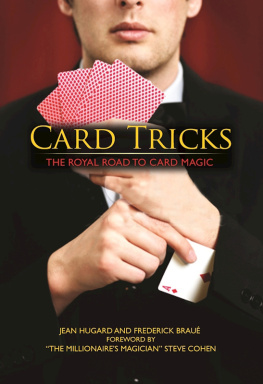

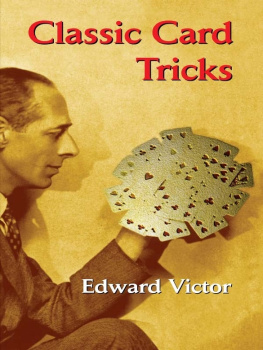

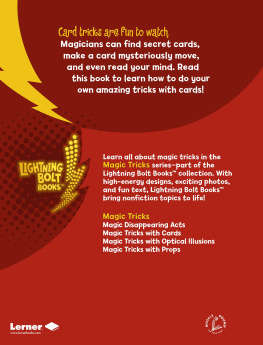
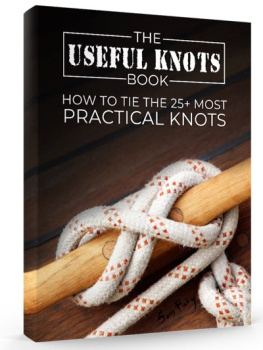
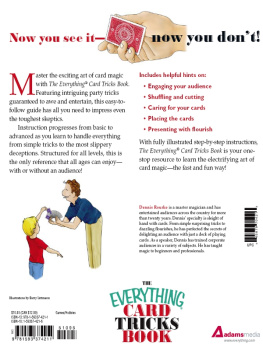
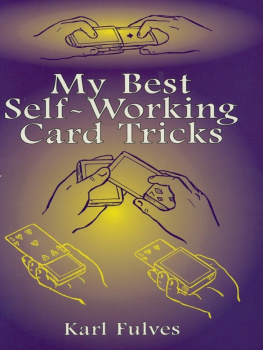
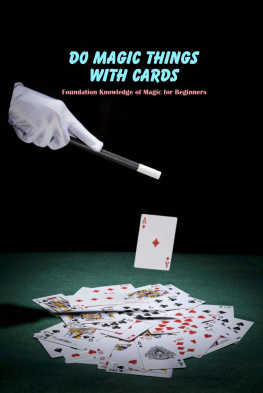
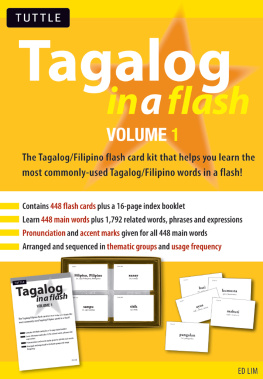
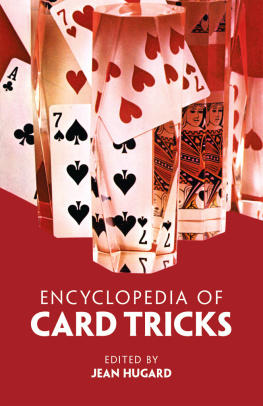

 www.trafford.com
www.trafford.com